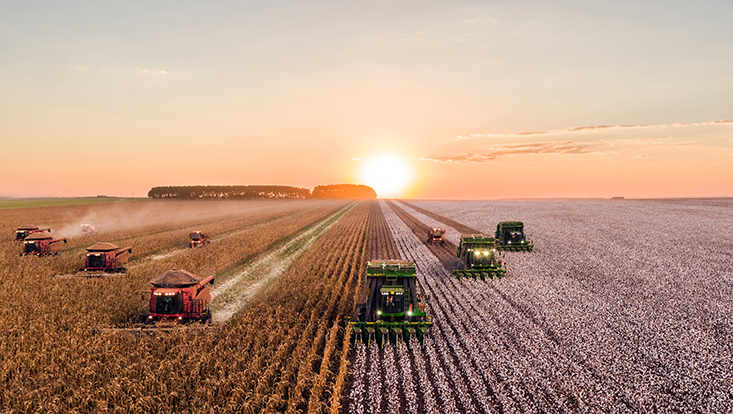Pesticides: improving harvests, or a hazard in our crop fields?
11 July 2019, by Dr. Livia Rasche; CEN Universität Hamburg

Photo: unsplash.com/J.Marques
What can farmers in Europe or Africa do when the temperatures climb or extreme downpours become more frequent? For farmers around the globe, climate change represents a true challenge. Should they adapt by switching the crops they grow? Or invest in new technologies like overhead irrigation?
To identify suitable plants and promising techniques, we at Universität Hamburg’s CEN work to develop special-purpose computational models, which allow us to simulate the future yield for large plots of farmland. In this way we can estimate how higher temperatures and more rainfall will affect the potato crop in a given location. The models also help us find the current best mix of irrigation and fertilization – plus I can try out new techniques without having to test them in an actual crop field.
However, the results are always incomplete, because one central factor is missing: the use of pesticides. Whereas we in Europe tend to be concerned about toxic residues on fruits and vegetables, in other countries pesticides are virtually luxury items. Smallholder farmers in Africa, for example, suffer major crop losses from insects and fungi. A certain pesticide could prevent these losses, but is usually too expensive. Global crop losses due to pests and fungi are roughly 20 percent for maize, potatoes and soybeans, and ca. 30 percent for rice. Preventing these losses would help in the battle against hunger.

That being said, pesticides can also do serious damage, as can be seen in a series of deaths and poisonings in connection with cotton farming in India over the past 20 years. The recently released IPBES Report on Biodiversity is also critical of pesticide use.
So what amounts of pesticide deliver how much more yield – and what’s the price tag in terms of health and preserving nature? To find that out, pesticides have to be integrated into agricultural models. But the complicated lifecycles of pests have made doing so infeasible to date. It’s extremely difficult to depict the effects of a given insect species in a computer model. On the one hand, that’s because they don’t constantly do harm: though insect eggs are harmless, caterpillars and larvae usually have a healthy appetite. In turn, adult insects eat less.
On the other, different insects attack different parts of the plants: if they chew a bit on the leaves, that’s not particularly tragic. But if they gnaw on the stalk, the plant can die. Bearing these factors in mind, with the help of an entomologist I dug deep into the biology of the European corn borer and potato leafhopper, so that I could ultimately represent their influence in mathematical formulas.
But was my new model accurate? To test it, I analyzed scientific field experiments with maize, soybeans and potatoes conducted in the USA, where crops were cultivated in various climate zones from 1985 to 2014. All of the data gathered is well documented: planting, growth, fertilizing, spraying with pesticides, pest density and crop yield. These were the types of control data that I needed from the real world. I then simulated the yield for 14 crop fields, and added weather data for the respective year and the documented measures the farmers took. The result was a complete success: the calculated yields matched very well with the actual harvests! That showed me that the new tool could make reliable forecasts on pesticides and crop yield.
What I’m now focusing on are the actual costs that pesticides entail. In addition, the consequences for the environment and human health should be considered. To date, the increased revenues have only benefited the producers, while all of society has had to bear the long-term costs. My agricultural model can help to find and quantify those costs.
Livia Rasche
Dr. Livia Rasche is an environmental researcher and expert on sustainable agriculture.
Newspaper: This article was first published as a guest article in the Hamburger Abendblatt as part of a monthly series on climate research. Find all articles of the series here.


